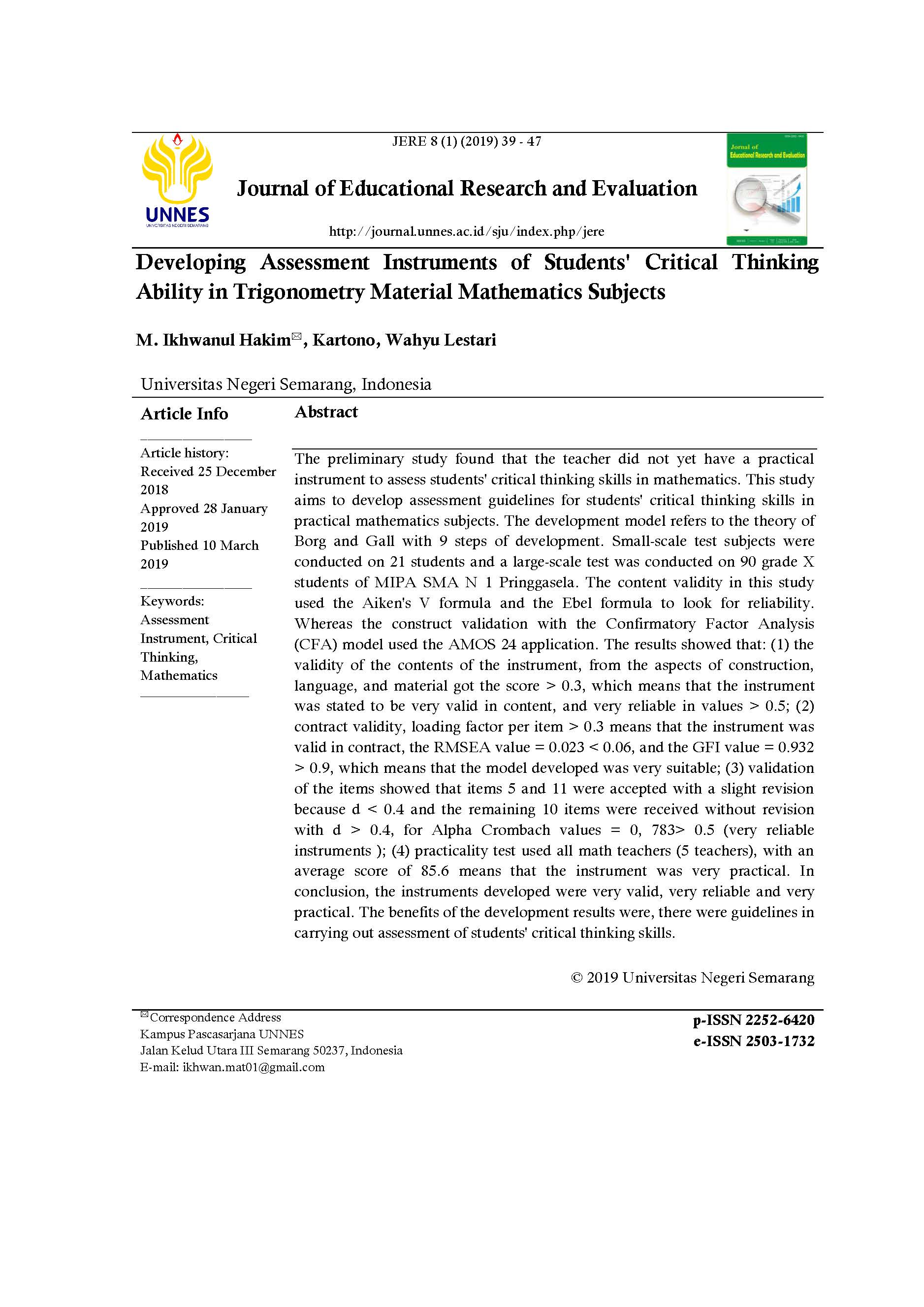Developing Assessment Instruments of Students' Critical Thinking Ability in Trigonometry Material Mathematics Subjects
##plugins.themes.academic_pro.article.main##
Abstract
The preliminary study found that the teacher did not yet have a practical instrument to assess students' critical thinking skills in mathematics. This study aims to develop assessment guidelines for students' critical thinking skills in practical mathematics subjects. The development model refers to the theory of Borg and Gall with 9 steps of development. Small-scale test subjects were conducted on 21 students and a large-scale test was conducted on 90 grade X students of MIPA SMA N 1 Pringgasela. The content validity in this study used the Aiken's V formula and the Ebel formula to look for reliability. Whereas the construct validation with the Confirmatory Factor Analysis (CFA) model used the AMOS 24 application. The results showed that: (1) the validity of the contents of the instrument, from the aspects of construction, language, and material got the score > 0.3, which means that the instrument was stated to be very valid in content, and very reliable in values > 0.5; (2) contract validity, loading factor per item > 0.3 means that the instrument was valid in contract, the RMSEA value = 0.023 < 0.06, and the GFI value = 0.932 > 0.9, which means that the model developed was very suitable; (3) validation of the items showed that items 5 and 11 were accepted with a slight revision because d < 0.4 and the remaining 10 items were received without revision with d > 0.4, for Alpha Crombach values = 0, 783> 0.5 (very reliable instruments ); (4) practicality test used all math teachers (5 teachers), with an average score of 85.6 means that the instrument was very practical. In conclusion, the instruments developed were very valid, very reliable and very practical. The benefits of the development results were, there were guidelines in carrying out assessment of students' critical thinking skills.
